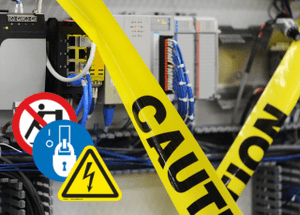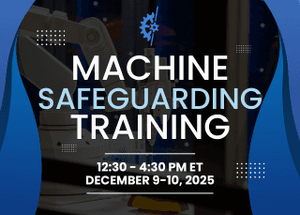From Industrial Labels to Stickers to Safety Signs: Know the Differences in Visual Communications in the Workplace
From Industrial Labels to Stickers
to Safety Signs: Know the Differences in Visual Communications in the Workplace
Visual communication on products and in the
workplace is important to prevent liability issues, keep workers safe, and
promote business efficiency. Safety, warning and instructional messages need to
meet regulations set by organizations such as OSHA, ANSI and NFPA/NEC and any
custom printing related to identification and asset management should meet your
organization’s specific needs for the best communication possible. Your
markings also need to be made of the right materials for your application, in
order to stand up to the environment they’ll be placed in. Before ordering new
safety labels and safety signs, or any type of industrial markings, first
understand more about the types of visual communication to be compliant and
effective.
Types of Visual
Communication
There are many ways to convey warning, safety and instructional messages
in both consumer and industrial settings. It’s common to get the different
types of messaging confused. However, knowing the differences is important to
ensure that you’re on the same page with your suppliers and with the needs of
your business. Generally-speaking, common on-product and workplace messaging
mediums include the following:
- Labels: Labels are adhesive-backed materials that directly attach to a package, container or piece of equipment. They’re often used to convey safety and warning information, like those specified in the ANSI and ISO standards and in OSHA regulations, and in such cases have specific guidelines or regulations to follow in terms of wording, graphics and colors.
- Stickers/Decals: Stickers and decals are like labels because they attach to objects with an adhesive backing. However, a sticker may not provide specific hazard information. Another differentiating feature from labels is that stickers and decals may lack the material quality of industrial labels. These communication tools can be used as embellishments in work settings, or to provide identification or asset management information.
- Signs: Signs are typically made from hardbacked materials and are mounted on structures to convey various types of information. As with labels, signs are often used to convey safety and warning information, like those specified in the ANSI and ISO standards and in OSHA regulations.
- Placards: Placards are also hardbacked and convey information. Similar to signs and labels, the information on placards can include a graphic and a signal word and word message to convey hazards and safety information. The difference between what’s commonly referred to as a placard versus a sign is often due to placement location. Placards come in many different types and serve many different purposes. As examples of varying types of placards: according to the NFPA, DOT placards are affixed to moving vehicles and inform transportation workers and emergency responders; Clarion Safety offers water safety sign placards for use at hotel and public pools, beaches and waterparks to help remind patrons of pool rules and how to stay out of harm’s way.
- Tapes: Tape is typically used to convey temporary warning messages in an industrial workplace. It can be used to barricade certain areas or to mark temporary hazard locations. It can also be used in a more permanent way as part of an egress safety system in the form of photoluminescent tape or guidance lines to mark steps, handrails and stairwells, perimeters and exit paths – guiding the way to safety.
- Tags: In industrial settings, tags are frequently used on equipment and in workplaces, like to mark pipes and valves, in a temporary way to convey hazard information until the hazard is removed. When used in that way, they’re often laminated to protect against wear and tear. Another form, though, is asset tags, industrial ID or commercial tags (including nameplates/dataplates) which can be used to identify and track valuable information. They often include serial numbers or barcodes.
Safety-Specific
Communication in Industrial Workplaces
Visual communication may be used to inform about hazardous
substances, daily procedures, emergency evacuation plans and more. Safety-specific
messaging focuses on communication that is central for a safe work environment
and safe equipment. For example, this includes hazard warnings, lockout tags
and confined space messaging.
One of the core differences between these safety-specific types of visual communication and the more general ones noted above are that there are standards and regulations that stipulate certain requirements and provide a guide to today’s best practices. Another difference is the materials used. Safety-specific industrial warnings are often made of much more durable and high-quality material due to the safety implications involved if one of these types of communications fails to stay on its intended surface. The three most common safety communication tools are safety labels, safety signs and safety tags.
- Safety labels: Safety labels are used on products by OEMs following a risk assessment and in workplaces after a product has been placed there or hazard has been identified. It’s important that the right signal words, color and symbols are selected to meet best practices and regulations, as well as to communicate clearly. Clarion Safety offers high-quality safety labels for products and workplaces, ranging from electrical hazard labels to slip, trip and fall labels. We often work with our customers to understand their environment of use to ensure the right materials are used in their application.
- Safety signs: A safety sign secured in a prominent place on a factory floor, construction area, or other type of worksite is a durable way to clearly communicate information that workers need to stay safe. Clarion Safety offers safety signs that meet a range of regulations and standards – from ANSI/OSHA to ISO – and convey messages such as fire safety and hazardous material warnings.
- Safety tags: In an industrial setting, safety tags should be yellow or red to convey caution or danger. A benefit of safety tags is they are easy to install and convenient to use until a sign is placed or a hazard removed. Clarion Safety offers safety tags that comply with OSHA and ANSI and warn about hazards like lockout tagout, accident prevention and confined space.
Materials and Print Processes – Including Metalphoto®
Whether you’re printing and posting safety messages or those related to identification
or asset management, its critical to have durable markings that stand up to
their environment of use. That may include indoor and outdoor applications and
harsh environments like extreme temperatures or caustic washdowns. When
longevity and resilience are a concern, high performance materials such as
aluminum, brass, stainless steel and vinyl can be considered. Another ideal
solution for high-resolution, permanent markings is photosensitive anodized
aluminum – also referred to as photo anodized aluminum, photo metal or
Metalphoto® - as it's
designed to withstand virtually any condition from weather/UV/temperature to
abrasion and corrosion. In fact, due to its durability characteristics, Metalphoto®
is routinely used and trusted by industries such as defense, aerospace,
transportation, marine energy and heavy equipment.This unique, photographic
imaging process creates ultra-high resolution graphics and variable
information, including machine-readable barcodes, anti-counterfeit security
features and serialized data. The benefit is fewer label, nameplate, sign or
control panel replacements due to illegibility.
Best in Class Customer Service to Meet Your Requirements
A company that uses quality safety labels, signs and tags can achieve effective
visual communication. This promotes safety when using equipment and in work
environments. With our nearly 30 years of experience working hand in hand with
customers to deliver visual safety communication solutions that comply with
industrial regulations, Clarion Safety is ready to provide the resources needed
for compliant and best practice warnings. We also offer a variety of custom
printing solutions like
Metalphoto® labels and tags, asset tags, nameplates or dataplates, including those with etching
and industrial engraving
, variable data, serialization and barcodes. You
can work hand in hand with us to create the solution you need according to your
specifications, or for your convenience, try our online 'do it yourself' custom
product designers. With more than 70 designers available, see how easy it is to
create your own safety label, sign or tag online. We’re always
standing by
if you need assistance.
This blog was originally posted on 1/14/2019 and updated with new information.




